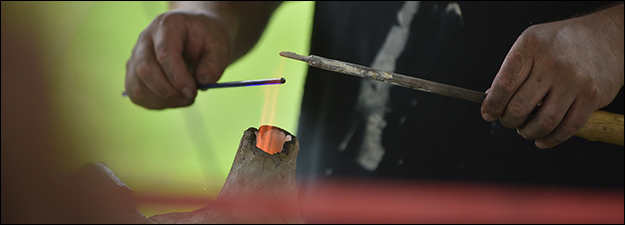Medieval Transidentities
Sponsoring Organization(s)
Special Session
Organizer Name
Kristen Carella
Organizer Affiliation
Assumption College
Presider Name
Micah Goodrich
Presider Affiliation
Univ. of Connecticut
Paper Title 1
Editing Flesh: Modern and Medieval Transsexual Desire
Presenter 1 Name
Rowena Galavitz
Presenter 1 Affiliation
Indiana Univ.-Bloomington
Paper Title 2
Completing the Communion: The Cross Dressing Saints and Martyrs of the Smaller Vernon Legend Collection
Presenter 2 Name
Leanne MacDonald
Presenter 2 Affiliation
Univ. of Notre Dame
Paper Title 3
Genres of Embodiment: A Theory of Medieval Trans Literature
Presenter 3 Name
M. W. Bychowski
Presenter 3 Affiliation
George Washington Univ.
Paper Title 4
Respondent
Presenter 4 Name
Kristen Carella
Start Date
15-5-2016 10:30 AM
Session Location
Schneider 1160
Description
Medieval Transidentities
In the past few years, definitions of transgender identity have evolved rapidly, due primarily to developments in popular culture. Academics, on the other hand—from clinical psychology to literary studies—have struggled to keep up. Externally-imposed, restrictive categories such as “transsexual” and “drag king” or “drag queen,” have yielded to a more representative, fluid range of subject-determined identities on the spectrum between transmasculine and transfeminine. Transidentities are inherently non-binary as the trans- prefix suggests a crossing through; words such as “transit” and “transform” leave us to consider the process in-between, rather than focus on a beginning or final destination.
It is our belief that this advance in the popular understanding of transidentities within contemporary western and global cultures might help us to better understand analogous phenomena across the temporal and social divides, that is, between the current day and the different cultural environments of the medieval world.
As part of this endeavor, we seek to distinguish between gender transgression (a topic of great interest in the past) and the outright transition of gender identity. While the latter might be defined as an event or behavior that challenges traditional ideas about gender in a manner that focuses on the powers that impose these categories, it also denies the transcendence of gender on a more fundamental level in a manner that focuses primarily on the subject’s experience of transidentification.
This panel seeks papers on any topic, academic field, critical method, or culture that bear on the medieval understanding, representation, and reimagining of transidentities. In addition to studies on particular texts, art, artifacts, or cultures, we also welcome papers that examine methods and methodologies for investigating medieval transidentities. Our hope is to begin new conversations and widen the discussion about transidentities in the medieval world and the field at large.
Medieval Transidentities
Schneider 1160
Medieval Transidentities
In the past few years, definitions of transgender identity have evolved rapidly, due primarily to developments in popular culture. Academics, on the other hand—from clinical psychology to literary studies—have struggled to keep up. Externally-imposed, restrictive categories such as “transsexual” and “drag king” or “drag queen,” have yielded to a more representative, fluid range of subject-determined identities on the spectrum between transmasculine and transfeminine. Transidentities are inherently non-binary as the trans- prefix suggests a crossing through; words such as “transit” and “transform” leave us to consider the process in-between, rather than focus on a beginning or final destination.
It is our belief that this advance in the popular understanding of transidentities within contemporary western and global cultures might help us to better understand analogous phenomena across the temporal and social divides, that is, between the current day and the different cultural environments of the medieval world.
As part of this endeavor, we seek to distinguish between gender transgression (a topic of great interest in the past) and the outright transition of gender identity. While the latter might be defined as an event or behavior that challenges traditional ideas about gender in a manner that focuses on the powers that impose these categories, it also denies the transcendence of gender on a more fundamental level in a manner that focuses primarily on the subject’s experience of transidentification.
This panel seeks papers on any topic, academic field, critical method, or culture that bear on the medieval understanding, representation, and reimagining of transidentities. In addition to studies on particular texts, art, artifacts, or cultures, we also welcome papers that examine methods and methodologies for investigating medieval transidentities. Our hope is to begin new conversations and widen the discussion about transidentities in the medieval world and the field at large.

